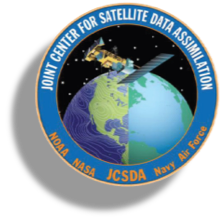Article by Dr. Ben Johnson, JCSDA CRTM Lead
The Community Radiative Transfer Model (CRTM) allows us to make the best use of the billions of dollars spent on earth-observing satellites for operational data assimilation, calibration and validation, and post-processing applications. The CRTM is the critical operational model that enables satellite data assimilation capabilities in multiple federal agencies (NOAA, NASA, DoD) and within many other service organizations both domestic and international.
The CRTM has two primary objectives:
(1) accurately simulate satellite-based radiances (i.e., a satellite simulator); and,
(2) compute the radiance sensitivity to a change in the atmospheric/surface state (i.e., a radiance interpreter). This response is called the Jacobian output.
Developed over a period of 16 years, the CRTM is a true community model: dozens of developers over the years have substantially contributed to the development of the CRTM through their contributions, many of which were unfunded or voluntary efforts. We continue to expand that aspect of CRTM development through open-access modern software development methodologies.
However, a number of challenges remain with respect to accurate modeling of satellite radiances under all-sky conditions. Aerosols, clouds, precipitation, and complex surface properties present unique computational challenges for the accurate simulation of satellite radiances due to the fact that these constituents scatter or reflect radiation in complex ways.
To address this, the CRTM team has been developing a new version (CRTM v3.0) to address several deficiencies in the existing operational model (CRTM v2.3).
CRTM version 3.0 will extend the capabilities of CRTM v2.3, while maintaining backward compatibility; consequently, there will be very little operational risk to test or upgrade to CRTM v3.0.
CRTM v3.0 will add the ability to support ultraviolet sensors, and will add support for full Stokes polarization simulation capability across all wavelengths. Through the efforts of JCSDA personnel, we have also implemented multi-threaded parallelization using OpenMP directives, vastly improving wall-clock performance while simultaneously reducing computational overhead within MPI-based systems, such as UFS, FV3-JEDI, etc. CRTM v3.0 adds support for many upcoming and updated satellite sensors, with full polarization capabilities. Additionally, the aerosol, cloud, and precipitation scattering tables are updated for more physically realistic cloud and precipitation simulations with scattering-induced polarization support. Furthermore, physical and radiative surface properties are being updated in support of the full polarization requirements. The lookup tables developed for CRTM v3.0 will be provided in netCDFv4 file formats, eventually replacing current binary format files.
The CRTM v3.0 development paradigm aims to have a robust, automated testing framework following industry standard unit, regression, and implementation testing methods -- consistent with JCSDA-wide software development and testing standards.
We believe CRTM v3.0 with full polarization, computational optimization, and more physically realistic atmosphere and surface properties will substantially increase the number of observations that can be assimilated in modern data assimilation frameworks, and reduce the biases due to the increased accuracy of the physical and radiometric simulations. Less data being thrown away means vastly improved utility for our satellites.
CRTM v3.0-beta is expected to be available in February 2021, with the complete version available for release later in 2021. Contact bjohns@ucar.edu for details or with questions or join us on the JCSDA forums (https://forums.jcsda.org/).

